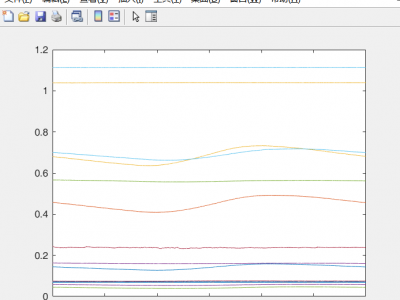Artificial Intelligence
SYPHAXAR dataset is a dataset for Arabic text detection in the wild. It was collected from Tunisia in “Sfax” city, the second largest Tunisian city after the capital. A total of 3078 images were gathered through manual collection one by one, with each image energizing text detection challenges in nature according to real existing complexity of 15 different routes along with ring roads, intersections and roundabouts. These annotated images consist of more than 31000 objects, each of which is enclosed within a bounding box.
- Categories:
 242 Views
242 Views
This dataset comprises data created during research on AI-generated code, with a focus on software engineering use-cases. The purpose of the research was to investigate how AI should be integrated into university software engineering curricula.
- Categories:
 651 Views
651 Views
Overview
The dataset under consideration is a comprehensive compilation of code snippets, function descriptions, and their respective binary representations aimed at fostering research in software engineering. It contains a variety of code functionalities and serves as a valuable resource for understanding the behavior and characteristics of C programs. This data is sourced from the AnghaBench repository, a well-documented collection of C programs available on GitHub.
Columns and Data Types
- Categories:
 141 Views
141 ViewsThe "Queue Waiting Time Dataset" is a detailed collection of information that records the movement of waiting times in queues. This dataset contains important details such as the time of arrival, the start and finish times, the waiting time, and the length of the queue. The arrival time denotes the moment when customers enter the queue, while the start and finish times track the duration of the service process. The waiting time measures the time spent waiting in the queue, and the queue length shows the number of customers in the queue when a new customer arrives.
- Categories:
 2376 Views
2376 Views
The 33-, 119-, and 136-bus datasets are commonly used in the field of power systems and electrical engineering to train reinforcement learning-based algorithms for distribution network reconfiguration. Distribution network reconfiguration involves altering the topology of the electrical distribution grid by opening or closing switches to optimize certain objectives, such as minimizing power losses, improving voltage profiles, or enhancing overall system efficiency. This process is essential for maintaining a reliable and cost-effective power distribution system.
- Categories:
 1025 Views
1025 Views
In primary education in China, mathematics, science, and Chinese are commonly considered as the core subjects. This emphasis is primarily due to their significance in providing a strong foundation for students' overall academic development in their whole life. Mathematics cultivates logical thinking, problem-solving skills, and numerical proficiency, which are essential in various disciplines. Science education fosters scientific literacy, critical thinking, and an understanding of the natural world.
- Categories:
 186 Views
186 Views
The Narrative question answering (QA) problem involves generating accurate, relevant, and human-like answers to questions based on the comprehension of a story consisting of logically connected paragraphs. However, this problem remains unexplored for the Arabic language because of the lack of Arabic narrative datasets. To address this gap, we present the Arabic-NarrativeQA dataset, which is the first dataset specifically designed for machine-reading comprehension of Arabic stories.
- Categories:
 261 Views
261 Views
ScanReferr facilitates a clear correspondence between expressions and instances in 3D point cloud scenes, enabling effective identification of target objects. However, the explicit mention of the target object in the expression creates a shortcut that filters out negative samples, aiding model learning. In order to mitigate overreliance on this shortcut, we conducted manual processing of the ScanReferr dataset. Specifically, we replaced the name of the referring object with the term ``object'' while preserving the names of other objects.
- Categories:
 26 Views
26 Views
ScanReferr facilitates a clear correspondence between expressions and instances in 3D point cloud scenes, enabling effective identification of target objects. However, the explicit mention of the target object in the expression creates a shortcut that filters out negative samples, aiding model learning. In order to mitigate overreliance on this shortcut, we conducted manual processing of the ScanReferr dataset. Specifically, we replaced the name of the referring object with the term ``object'' while preserving the names of other objects.
- Categories:
 3 Views
3 ViewsDataset description:
This contains ten categories of gas data, each category contains 5 concentrations, 10, 20, 30, 40, 50ppm.
There are 160 groups of 10, 20, 30, 40, each group contains 6000 sampled voltage signals, and the sampling frequency is 10HZ.
There are only 80 groups for 50ppm concentration, and each group also contains 6000 sampled voltage signals.
The label corresponding to each gas includes category and concentration, which can be split by gas category and concentration.
- Categories:
 1214 Views
1214 Views

